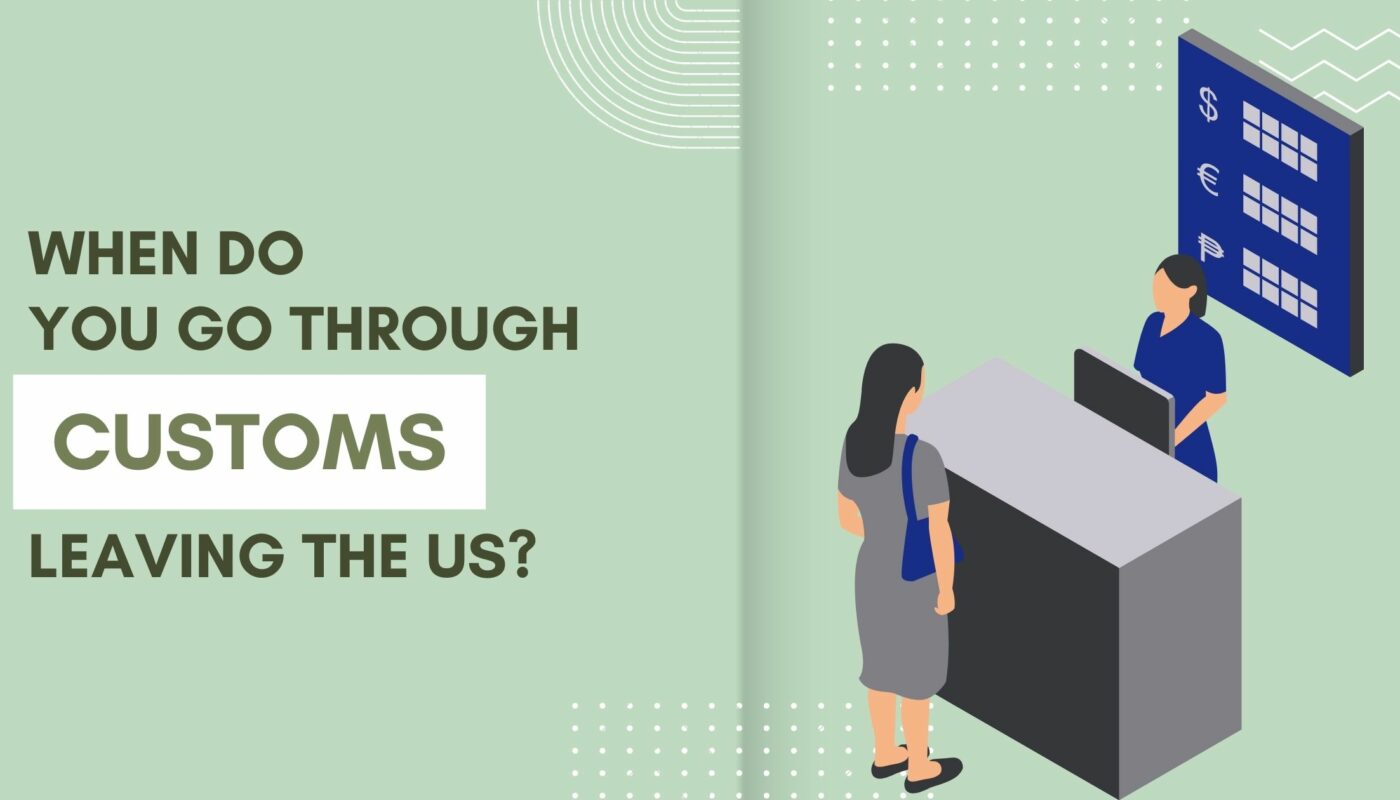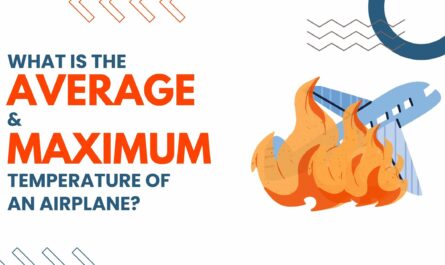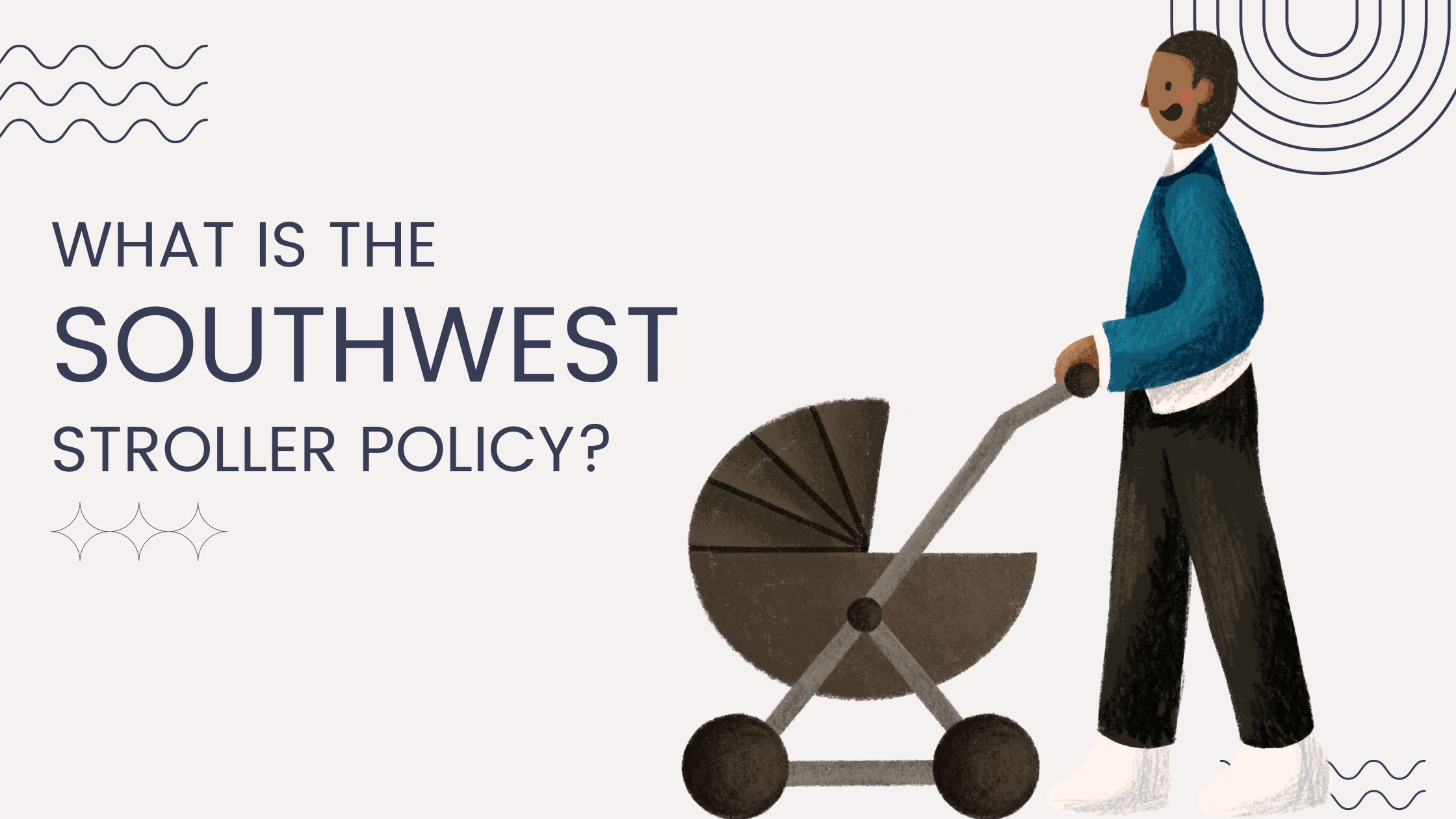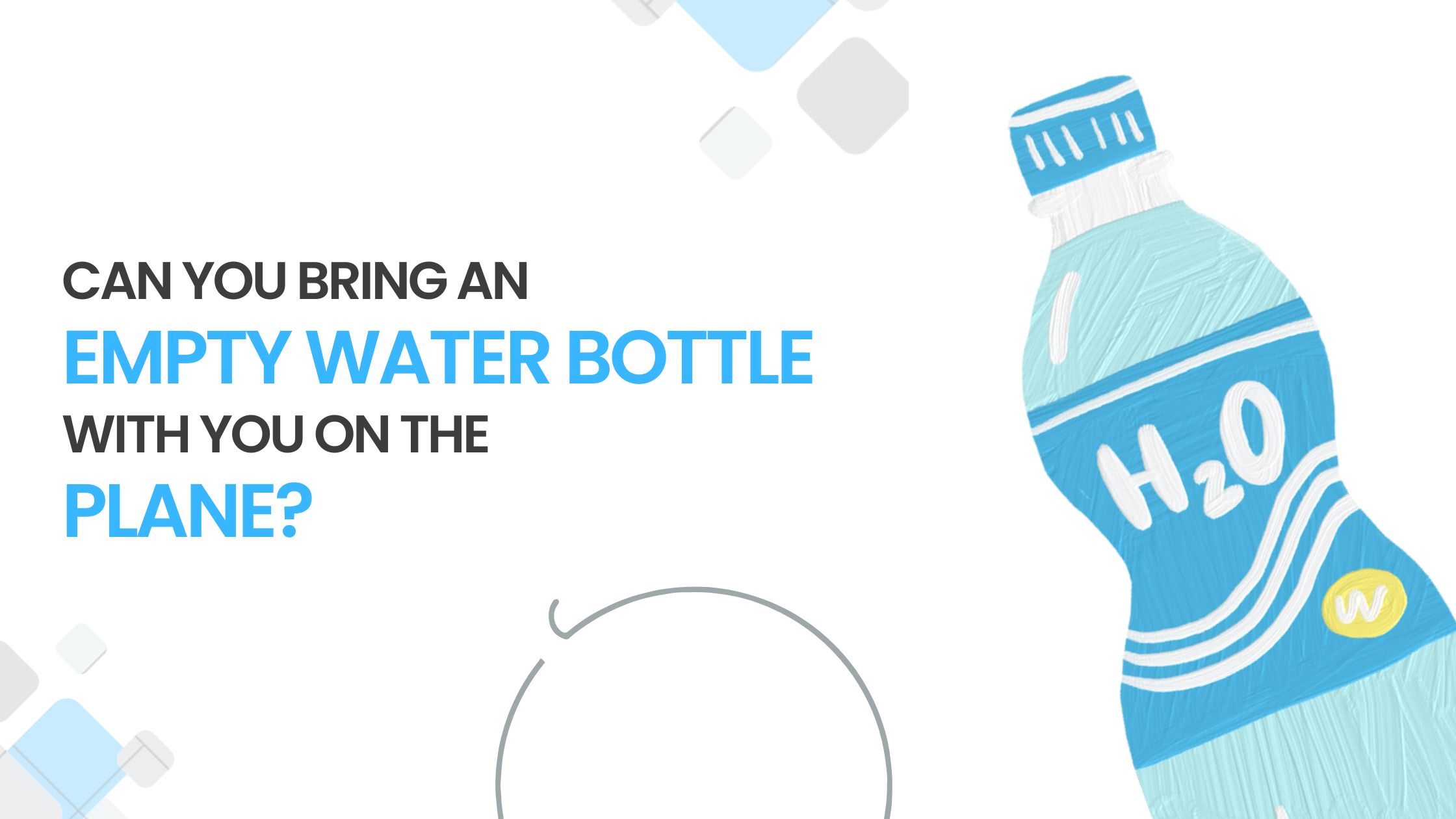While most people are familiar with going through customs when entering a foreign country, what about when you’re leaving the United States? When exactly do you need to go through customs before departing? Understanding this process is crucial to ensure a smooth and hassle-free travel experience.
This article explores the specific situations that require customs clearance before leaving the United States.
Do You Go Through Customs When Leaving The U.S.?
In contrast to countries that have strict exit controls, the U.S., along with Canada and the UK, does not implement formal exit controls at its airports. This means that travelers departing from these countries do not typically go through customs checks at the point of departure.
The emphasis has been more on sharing passenger manifest information with governments of other countries to verify exits and ensure proper immigration procedures.
In the United States, the process of departing the country involves certain procedures, but they differ from those associated with arriving.
When leaving the U.S., there isn’t a formal customs inspection process akin to what travelers experience upon entry.
When Do You Go Through Customs Leaving The US?
If you have goods or items that need to be declared, such as valuable items or certain types of food, you should inform the customs officials before leaving. Each country may have different rules and requirements for declaring items, so make sure to stay informed.
Items that need to be declared at customs include any items that are restricted or prohibited by the country you are entering, such as firearms, drugs, or certain types of food.
Additionally, you must declare any items that exceed the duty-free allowance, which varies by country.
Duty-free items include alcohol, tobacco, and luxury goods. It is important to accurately declare these items to avoid any legal issues or penalties.
Here’s a table of different items that are commonly restricted or prohibited by U.S. customs regulations:
| Restricted Items | Description | Explanation |
| Firearms | Guns, ammunition, and explosives | Restricted due to safety concerns and potential threats. |
| Illegal Drugs | Narcotics and controlled substances | Prohibited for legal and health reasons. |
| Counterfeit Goods | Fake branded items | Violates intellectual property rights and trade laws. |
| Endangered Species | Items made from protected wildlife species | Restricted to prevent illegal trafficking and poaching. |
| Cultural Artifacts | Antiquities, historical items, and art | Limited due to preservation of cultural heritage. |
| Cuban Cigars | Cigars from Cuba | Restricted due to trade embargo and economic sanctions. |
| Prohibited Foods | Fresh fruits, meats, and plants | Can carry pests, diseases, or ecological risks. |
| Ivory Products | Items made from ivory | Banned to protect endangered elephants from poaching. |
| Certain Medications | Prescription drugs, and controlled substances | Restricted to prevent misuse and illegal distribution. |
| Hazardous Materials | Chemicals, flammable items, and batteries | Controlled due to safety and environmental concerns. |
Here, are some situations, when you should go through customs when leaving the US:
-
When You Are Departing An International Flight From A US Airport:
Most airports in the US will have an area dedicated to customs where passengers must go through immigration and customs before they can depart on their flight. This is to ensure that no prohibited items are leaving the country and to make sure everyone has valid documentation.
-
When You Are Crossing A Land Border From US to Canada Or Mexico:
When crossing the US-Mexico or US-Canada border, you will be required to go through customs. This is done to make sure that all goods entering and leaving the country are properly declared and accounted for.
-
When You Are Taking A Cruise Ship From A US Port:
Depending on the destination of the ship, you may be required to go through customs when departing from a US port.
What Happens If You Don’t Declare Something At Customs When Leaving The US?
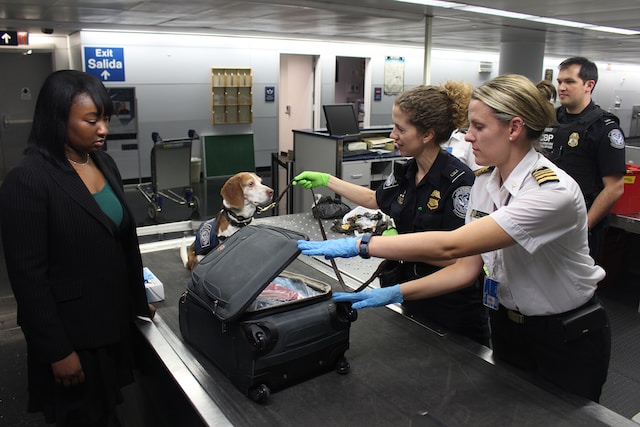
If you don’t declare something at customs when leaving the US, it can have serious consequences. Customs and Border Protection (CBP) has the authority to seize any undeclared items and impose fines, and penalties. The severity depends on the nature of the undeclared item.
In some cases, it may be considered a simple oversight or mistake, and CBP may give a warning or impose a fine.
However, intentionally not declaring items can be seen as smuggling or fraud, which can result in criminal charges, hefty fines, and even imprisonment.
Do You Really Not Have To Go Through Customs Leaving The U.S.?
Although there is no exit control when leaving the U.S., travelers may be subject to random searches of their luggage. This process helps ensure that travelers are in compliance with laws and regulations and helps prevent the illegal export of goods from the country.
During this process, travelers may be asked to provide information about their travel plans, destination, and the items they are carrying.
If anything is found that cannot be brought into another country, it will be confiscated.
Why Does Customs Check Your Luggage When Leaving The U.S.?
Customs randomly checks your luggage to monitor currency exports, occasional gate checks for security purposes, and selective checks for individuals with legal restrictions. However, the primary focus remains on controlling who enters the country, and departure procedures generally rely on electronic records.
Here are some specific scenarios in which such checks might occur:
-
Random Exit Checks for Currency and Money Laundering
U.S. Customs and Border Protection (CBP) personnel might conduct random exit checks, particularly aimed at identifying individuals involved in illicit currency exports or money laundering.
The U.S. has legal limits on the amount of currency that can be taken out of the country without filing an official report. These checks help ensure compliance with these regulations.
-
Gate Checks
Occasionally, there are instances where travelers are randomly selected for checks at the departure gate.
This involves pulling passengers aside to verify passports, ask questions, and potentially inspect carry-on luggage.
These checks are infrequent and are not a routine part of the departure process. They may occur to ensure security and prevent any irregularities in travel.
-
Selective Checks for Banned Individuals
Individuals who are prohibited from leaving the country, such as fugitives or individuals with legal restrictions, may be detected through passenger manifests and passport information.
Federal databases are used to identify such cases before they are able to board their flights.
Customs vs. Immigration – What Is The Difference?
Generally, customs involves inspecting and declaring goods being brought into or taken out of a country. Immigration, on the other hand, involves the inspection and verification of the travel documents, such as passports and visas, of individuals entering or leaving a country.
When you want to come into a country, immigration officers check if you meet certain criteria.
They consider things like why you’re coming, how long you plan to stay, and if you follow the country’s immigration laws.
To learn more about the differences between customs and immigration, read this article!
Do You Go Through Customs Before Or After Your Flight?
You typically go through customs after your flight, once you have arrived at your destination. Customs is the process of inspecting and declaring goods and belongings to ensure they comply with the country’s regulations and to assess any duties or taxes that may be applicable.
After landing, passengers proceed to the designated customs area where they present their passports, complete declaration forms, and have their luggage inspected if necessary.
Going through customs is an important step in international travel to ensure the safety and security of the country and its citizens.
Do You Have To Go Through Customs On A Layover?
Passengers on layover flights must clear customs and immigration at the first point of entry. This is because layovers usually involve connecting flights in different countries or regions. On arrival, you will typically need to go through customs and immigration to enter that country or region.
This process involves presenting your passport, completing entry forms, and possibly going through security screenings. Once you have cleared customs and immigration, you can proceed to your connecting flight or continue your journey.
How To Go Through U.S. Customs?
First, you will need to fill out a Customs Declaration form, which asks for information about the items you are bringing into the country. Next, you will need to present your passport and any necessary visas to the Customs officer.
They will then ask you questions about your trip, such as the purpose of your visit and how long you will be staying.
Finally, you will need to go through the security screening process, which may include a baggage check and a body scan.
Here, the whole process is given in detail:
-
Step 1: Filling Out A Customs Form
All passengers arriving in the U.S. must fill out a customs form. This form is available online or at the airport or port of entry. It requires your basic information such as name, address, and date of birth, as well as information about the items you are bringing into the country.
-
Step 2: Passing Through Passport Control:
After filling out the customs form, passengers must present their passports for inspection by an immigration official. The officer will then inspect your passport and ask questions about your visit to the U.S. Be sure to answer all questions truthfully and honestly.
-
Step 3: Passing Through Baggage And Customs
After your bags have been retrieved, you will need to go through customs. You may be asked additional questions about the items you are bringing into the country and the purpose of your visit.
You will also be asked to declare any items that you are bringing with you that are subject to duty or taxes.
What Is The Fastest Way To Get Through Customs?
In general, the fastest way to get through customs is by utilizing programs such as Global Entry or TSA PreCheck. These programs allow pre-approved travelers to go through an expedited screening process, bypassing long lines and reducing wait times significantly.
With Global Entry, travelers can also use automated kiosks to complete their customs declaration, further speeding up the process.
The different processes to get through customs fast are given below:
Mobile Passport App
The Mobile Passport app is a free app available on both iOS and Android that allows U.S. citizens and Canadian visitors to submit their passport information and answers to customs declaration questions directly from their mobile device.
After completion, travelers receive a digital receipt that can be scanned at select U.S. airports, allowing them to bypass the regular customs line.
Self-Serve Kiosks
Self-serve kiosks are located both in the U.S. and abroad and allow travelers to enter their passport information, answer customs declaration questions, and receive a printed receipt.
Get Global Entry
For those who travel frequently or want to expedite the customs process even further, Global Entry is an excellent option. This program requires a one-time application fee and an in-person interview.
Note📝: Global Entry provides travelers with expedited clearance at more than 50 international airports and pre-approved access to the U.S. Customs and Border Protection (CBP) Trusted Traveler Network.
Here’s a table listing some countries that have U.S. pre-clearance facilities and the airports in those countries where U.S. pre-clearance is available.
| Country | Airports with U.S. Pre-Clearance |
| Canada | – Toronto Pearson International Airport (YYZ) |
| – Vancouver International Airport (YVR) | |
| – Montreal-Pierre Elliott Trudeau International Airport (YUL) | |
| – Calgary International Airport (YYC) | |
| – Edmonton International Airport (YEG) | |
| Ireland | – Dublin Airport (DUB) |
| – Shannon Airport (SNN) | |
| United Arab Emirates | – Abu Dhabi International Airport (AUH) |
| – Dubai International Airport (DXB) | |
| The Bahamas | – Lynden Pindling International Airport (NAS) |
| Bermuda | – L.F. Wade International Airport (BDA) |
| Aruba | – Queen Beatrix International Airport (AUA) |
| Curaçao | – Curaçao International Airport (CUR) |
| The Netherlands | – Amsterdam Airport Schiphol (AMS) |
| – Groningen Airport Eelde (GRQ) (Seasonal) | |
| – Maastricht Aachen Airport (MST) (Seasonal) | |
| – Rotterdam The Hague Airport (RTM) (Seasonal) |
Note📝: Pre-clearance availability might change, and it’s recommended to verify this information with official sources before planning your travel.
How Do You Skip Customs Lines At The Airport?
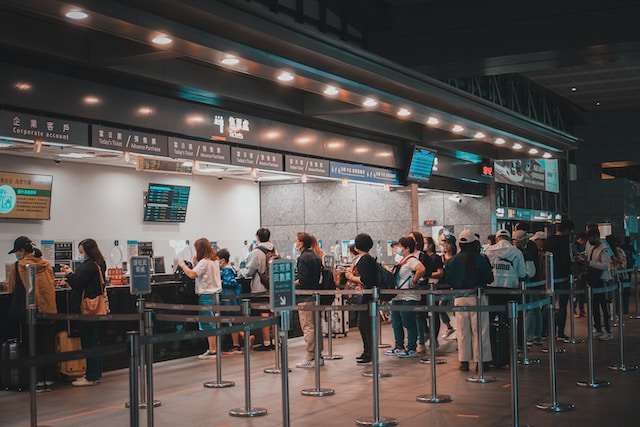
Generally, the mobile passport control app is a convenient tool that simplifies the process of reentering the country after being away. It does not replace the need for a physical passport but rather enhances the experience by reducing waiting times.
To use the app, users must download it and create a profile using their passport information. When arriving at a pre-approved airport, they can select “preclearance” on the app and proceed to take a selfie and answer border patrol questions.
Once completed, a QR code is generated, which can be used along with the physical passport to expedite the customs process.
For those concerned about the safety of the app or unsure of how it works, the best approach is to download it and follow the step-by-step instructions provided.
It is a straightforward process once inside the app.
FAQs
Can You Leave An Airport Without Going Through Customs?
No, you cannot leave an airport without going through customs. In most cases, you have to go through customs at an arrival airport and destination airport. Customs is a necessary process that ensures the legality and safety of goods and individuals entering or exiting a country.
Do You Go Through Customs When Leaving The U.S. To Canada?
Yes, because Canada has its own customs and immigration regulations that need to be followed when entering the country. At the border, you will be required to present your passport and may be asked questions about the purpose of your visit, the duration of your stay, and other relevant information.
Do You Go Through Customs When Leaving The U.S. To Mexico?
The answer is yes, when leaving the U.S. to Mexico, you will go through customs. Before boarding your flight or crossing the border, you will be required to pass through the U.S. Customs and Border Protection (CBP) checkpoint.
When Do You Go Through Customs When Flying To Europe?
When flying to Europe, you go through customs upon arrival at your final destination. This is typically the airport where you first step foot in the European country you are visiting. It involves presenting your passport, completing any necessary forms, and potentially having your luggage checked.
Can Border Officers Ask Questions About Your Immigration Status?
Yes, because border officers are responsible for enforcing immigration laws and ensuring the security and integrity of the country’s borders. They have the right to inquire about an individual’s purpose of travel, length of stay, and immigration status to determine their admission into the country.
When You Go Through Customs, Do You Have To Go Back Through Security?
You do not need to go back through security if you are staying within the airport’s international area. However, if you are connecting to a domestic flight or leaving the airport’s international area, you will typically need to go through security again.
Conclusion
In essence, while the U.S. does collect electronic exit data and shares it with relevant authorities, there isn’t a comprehensive customs process for departing travelers.
The focus remains primarily on regulating entry into the country, with exit procedures relying on electronic records and sharing of information rather than formal customs inspections.
However, always stay informed about the specific policies of the airline, airport, and destination country to ensure that you navigate the customs process efficiently and in accordance with the rules.

